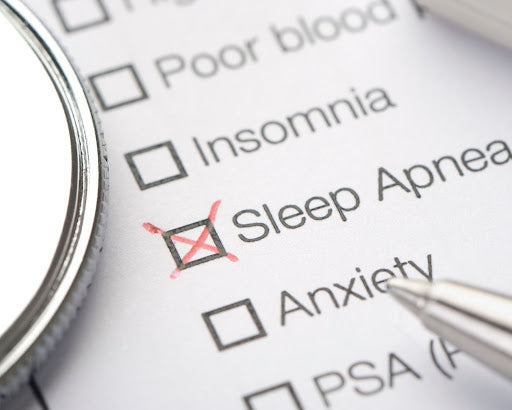There are few things more frustrating than a poor night’s sleep. Not only does poor sleep quality leave you feeling unrested and fatigued throughout the day, but it can increase the likelihood of mood swings and health problems.
If you’re tired of feeling tired all the time, it’s time for you to discover if you’re suffering from a sleep disorder. By narrowing down which type of sleep apnea you have, your sleep physician can provide a recommended treatment plan that will help you manage your sleep disorder — providing a sense of relief during the night.
Sleep apnea is a common sleep disorder that causes an individual to stop breathing multiple times throughout the night. As a result of these breathing disruptions, the patient is left feeling unrested even after getting a full night’s sleep. More often than not, the individual doesn’t know these cessations in breathing are occurring until another individual points out that they were choking or snoring while sleeping.
But getting diagnosed with sleep apnea isn’t as simple as that — three different types of sleep apnea present similar symptoms but have different causes. To ensure you get the right treatment for your situation, it’s imperative you know which type of sleep apnea you have.
Follow along as ApneaMed explains the three types of sleep apnea.
Obstructive Sleep Apnea
The most common type of sleep apnea is known as obstructive sleep apnea (OSA). This occurs when the patient experiences a blockage in their airway caused by the collapse of the soft tissues in their throat. Due to the restricted airway, the individual experiences reduced blood flow to the brain, which signals that it needs to breathe.
The breathing cessations repeatedly happen while sleeping and can occur anywhere from a few times to over a hundred depending on the severity of their apnea. Because air is unable to get through, the individual often snores, chokes, or gasps for air during the night in an attempt to reopen their airway. Likely, the patient isn’t aware that this is going on throughout the night until a partner lets them know they are snoring or choking in their sleep.
Central Sleep Apnea
Although obstructive sleep apnea is the most common type of sleep apnea, there are other forms to be aware of such as central sleep apnea. Unlike OSA, this form of sleep apnea is not a result of a collapsed airway and is caused when the patient’s brain temporarily stops sending the proper signals to the muscles that control their breathing. When this form of sleep apnea is present, it is likely caused by medical problems or conditions that impact the brainstem.
Complex Sleep Apnea
Last but certainly not least, we have the third form of sleep apnea known as complex sleep apnea. Frequently this condition is misdiagnosed as obstructive sleep apnea due to sharing many of the same symptoms. It is characterized as complex sleep apnea once the patient tries continuous positive airway pressure (CPAP) therapy, the most common treatment for sleep apnea. However, if they have complex sleep apnea, they will still experience breathing disruptions throughout the night even while utilizing the therapy.
When to See a Doctor for Breathing Disruptions
When left untreated, sleep apnea can make it difficult for you — or your loved one — to go about their day due to extreme tiredness, and it can lead to more severe health concerns. Sleep apnea can cause heart disease, diabetes, stroke, heart failure, high blood pressure, and more.
If you or a loved one are experiencing breathing disruptions throughout the night, it’s essential to get tested for sleep apnea so you can get treatment to prevent other health issues.
If you are having difficulty getting a good night’s rest, it’s time to consider getting tested for sleep apnea. For a convenient and affordable option, ApneaMed offers a home sleep study that can be self-administered in the comfort of your own home — saving you both time and money.
ApneaMed offers various home sleep tests and in-home breathing equipment to help you treat your obstructive sleep apnea. Contact our team to learn more.

